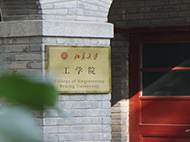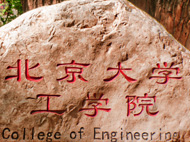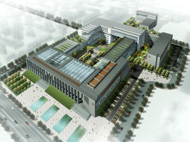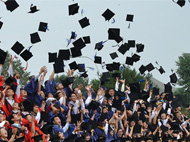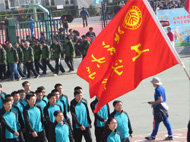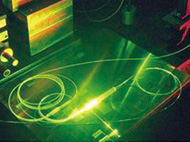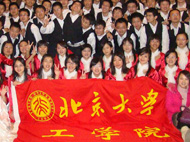讲座题目:The formation of a novel biodegradable polycaprolactone-magnesium scaffold for bone tissue engineering
时 间:10月10日(周一)下午 15:00
地 点:廖凯原楼2-401(前沿交叉学科研究院会议室)
主持人:郑玉峰
报告内容摘要:
Bone tissue engineering using scaffolds offers an alternative to traditional methods of bone replacement. Polycaprolactone (PCL) has attracted much interest because it degrades more slowly than other known biodegradable polymers, which allows sufficient time for bone integration. PCL is easily moulded due to its low melting point, however, its low mechanical strength and intrinsic hydrophobic properties limits its use in bone tissue applications. Hence, we have fabricated a biodegradable polymeric-metallic scaffold by incorporating magnesium (Mg) into PCL, since magnesium is a biodegradable metal which possesses higher mechanical strength and is an essential mineral for cells. This study aims to investigate the mechanical and in-vitro properties of the PCL-Mg scaffold.
The PCL-Mg scaffolds were fabricated by salt leaching of either 45μm or 150μm Mg beads with PCL (0.4:1 ratio). The compression test using a Material Testing System was conducted to examine the compressive moduli of the scaffolds. Green fluorescent protein osteoblasts (GFPOB) were cultured on the scaffolds to study the biocompatibility, while bioactivity in terms of apatite formation was determined by 7 days DMEM immersion.
The porosities of the scaffolds were approximately 70% and pore sizes ranged from 200-400μm, which are reported to be optimal for bone ingrowth. 3.1MPa and 1.0MPa higher compressive moduli were found for PCL-Mg scaffolds with 45μm and 150μm Mg beads, respectively, when compared to the pure PCL scaffold. This suggested that the mechanical properties of the PCL scaffold can be modified by incorporating different sizes of Mg beads. GFPOB grew well on the PCL-Mg scaffolds, and calcium and phosphate were found in the scaffolds after 7-days immersion in DMEM, which was not observed for pure PCL scaffold. This indicated that the PCL-Mg scaffolds are bioactive, favour cell growth and allow bone apposition. However, further studies including mechanical testing during degradation of the scaffolds are still needed.
报告人简介:
杨伟国博士在一九九八年于香港城市大学物理及材料科学系本科毕业,主修材料科学。同年, 以优异成绩进入了香港大学医学院修读外科科学研究生课程,在矫形及创伤外科学系从事有关矫正脊柱畸形病症的研究工作,并分别于二零零一年及二零零五年取得哲学硕士及哲学博士学位。杨博士先后于有关医学材料及材料科学的国际性期刊发表了超过六十篇研究论文,并在多个区域性及国际性的学术会议上发表了一佰多篇研究报告。此外,在杨博士及其导师的研究成果中, 共获取十多个由美国专利发明局或其他国家颁发的发明专利。他亦在多个骨科学会, 生物医学学会及工程师学会取得专业会员资格。在修读研究生课程期间,亦曾获取由香港大学颁发的王静宜医学研究奖学金,其研究项目亦曾于二零零三年在香港骨科学会周年会议及由国家科技部及教育部等单位联合举办的第八届全国大员工科学及技术成就竞赛挑战杯中,分别赢取最佳研究论文及科学技术成就二等奖。同年, 他获取由AO Foundation International 颁发的奖学金, 到其位于瑞士达沃斯的总部深造,研究及开发崭新的骨科内植入器械。在二零零五年,杨博士获香港科学会颁发青年科学家奖表扬他在研究及开发崭新的脊柱侧弯矫形器械的贡献。 在二零零九年,他也获香港工程师学会颁发青年工程师优异奖表扬他在研究及开发生物医学材料的贡献。杨博士的研究领域包括脊柱畸形及创伤、生物力学、生物医学材料、骨科内植入器械开发及其它相关课题。 由他领导的研究项目,拨款总额到现在大约为一仟七佰多万港币。


